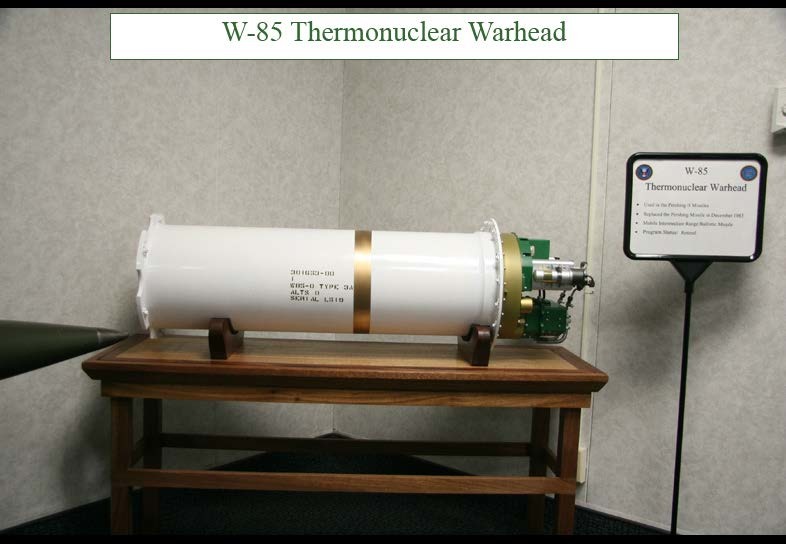|
Dunay Radar
Dunay radar ( literally Danube; NATO Reporting Name, NATO: Cat House, Dog House) was a system of two Soviet radars used to detect American ballistic missiles fired at Moscow, Russia, Moscow. They were part of the A-35 anti-ballistic missile system. One sector of one of the radars, the Dunay-3U ("Cat House") is still operational and is run by the Russian Space Forces as part of the Centre for Outer Space Monitoring, Main Control Centre of Outer Space. Dunay-2 The Dunay-2 was a prototype built in Sary Shagan as part of the experimental missile defence system "A". It consisted of separate transmitter and receiver complexes separated by . The power of the radar was 100 kW and its range was . The NATO codename was "Hen Roost". Dunay-3M The Dunay-3 (; NATO reporting name, NATO: Dog House) was an upgrade of the Dunay-2 located in Kubinka, Moscow and became operational in 1968. Following an extensive upgrade in 1978 it was renamed Dunay-3M as part of the upgraded A-35M ABM system. ... [...More Info...] [...Related Items...] OR: [Wikipedia] [Google] [Baidu] |
Soviet Military Radars
The Union of Soviet Socialist Republics. (USSR), commonly known as the Soviet Union, was a List of former transcontinental countries#Since 1700, transcontinental country that spanned much of Eurasia from 1922 until Dissolution of the Soviet Union, it dissolved in 1991. During its existence, it was the list of countries and dependencies by area, largest country by area, extending across Time in Russia, eleven time zones and sharing Geography of the Soviet Union#Borders and neighbors, borders with twelve countries, and the List of countries and dependencies by population, third-most populous country. An overall successor to the Russian Empire, it was nominally organized as a federal union of Republics of the Soviet Union, national republics, the largest and most populous of which was the Russian SFSR. In practice, Government of the Soviet Union, its government and Economy of the Soviet Union, economy were Soviet-type economic planning, highly centralized. As a one-party state go ... [...More Info...] [...Related Items...] OR: [Wikipedia] [Google] [Baidu] |
Chirp
A chirp is a signal in which the frequency increases (''up-chirp'') or decreases (''down-chirp'') with time. In some sources, the term ''chirp'' is used interchangeably with sweep signal. It is commonly applied to sonar, radar, and laser systems, and to other applications, such as in spread-spectrum communications (see chirp spread spectrum). This signal type is biologically inspired and occurs as a phenomenon due to dispersion (a non-linear dependence between frequency and the propagation speed of the wave components). It is usually compensated for by using a matched filter, which can be part of the propagation channel. Depending on the specific performance measure, however, there are better techniques both for radar and communication. Since it was used in radar and space, it has been adopted also for communication standards. For automotive radar applications, it is usually called linear frequency modulated waveform (LFMW). In spread-spectrum usage, surface acoustic wave (S ... [...More Info...] [...Related Items...] OR: [Wikipedia] [Google] [Baidu] |
Waveguide
A waveguide is a structure that guides waves by restricting the transmission of energy to one direction. Common types of waveguides include acoustic waveguides which direct sound, optical waveguides which direct light, and radio-frequency waveguides which direct electromagnetic waves other than light like radio waves. Without the physical constraint of a waveguide, waves would expand into three-dimensional space and their intensities would decrease according to the inverse square law. There are different types of waveguides for different types of waves. The original and most common meaning is a hollow conductive metal pipe used to carry high frequency radio waves, particularly microwaves. Dielectric waveguides are used at higher radio frequencies, and transparent dielectric waveguides and optical fibers serve as waveguides for light. In acoustics, air ducts and horns are used as waveguides for sound in musical instruments and loudspeakers, and specially-shaped metal rod ... [...More Info...] [...Related Items...] OR: [Wikipedia] [Google] [Baidu] |
Dnepr Radar
Dnestr radar () and Dnepr radar (), both known by the NATO reporting name Hen House, are the first generation of Soviet space surveillance and early warning radars. Six radars of this type were built on the periphery of the Soviet Union starting in the 1960s to provide ballistic missile warnings for attacks from different directions. They were the primary Soviet early warning radars for much of the later Cold War. In common with other Soviet and Russian early warning radars they are named after rivers, the Dnestr and the Dnepr. The Dnestr/Dnepr radars were intended to be replaced by the newer Daryal radars starting in the 1990s. Only two of the planned Daryal radars became operational, due to issues such as the dissolution of the Soviet Union. As of 2012, the Russian early warning network still consists of some radars of this vintage. It is likely that all the existing radars will be replaced by the third generation Voronezh radars by 2020. TsSO-P The Dnestr radar came from w ... [...More Info...] [...Related Items...] OR: [Wikipedia] [Google] [Baidu] |
Daryal Radar
The Daryal-type radar () (NATO: Pechora) is a Soviet bistatic early-warning radar. It consists of two separate large active phased-array antennas separated by around to . The transmitter array is and the receiver is in size. The system is a VHF system operating at a wavelength of 1.5 to 2 meters (150 to 200 MHz). Its initial transmit capacity was 50 MW with a target capacity of 350 MW. The designer of the radars, RTI Mints, says that each Daryal receiver is 100 × 100m and has 4,000 cross dipoles. Each transmitter is 40 × 40m with 1,260 modules, each capable of 300 kW. They say the radar has a range of 6,000 km with targets between 0.1 and 0.12m. It can track 20 objects at the same time and can cope with four jamming sources. The designer, Viktor Ivantsov, was awarded the title "Hero of Labour" for his work on the Daryal. The first Daryal type radar was an active electronically scanned array built at Olenegorsk in 1977. It was the receiver building only an ... [...More Info...] [...Related Items...] OR: [Wikipedia] [Google] [Baidu] |
Low Earth Orbit
A low Earth orbit (LEO) is an geocentric orbit, orbit around Earth with a orbital period, period of 128 minutes or less (making at least 11.25 orbits per day) and an orbital eccentricity, eccentricity less than 0.25. Most of the artificial objects in outer space are in LEO, peaking in number at an altitude around , while the farthest in LEO, before medium Earth orbit (MEO), have an altitude of 2,000 km, about one-third of the Earth radius, radius of Earth and near the beginning of the Van Allen radiation belt#Inner belt, inner Van Allen radiation belt. The term ''LEO region'' is used for the area of space below an altitude of (about one-third of Earth's radius). Objects in orbits that pass through this zone, even if they have an apogee further out or are sub-orbital spaceflight, sub-orbital, are carefully tracked since they present a collision risk to the many LEO satellites. No human spaceflights other than the lunar missions of the Apollo program (1968-1972) have gone beyond L ... [...More Info...] [...Related Items...] OR: [Wikipedia] [Google] [Baidu] |
Don-2N
The Don-2N radar (, NATO: Pill Box) is a large missile defense and early warning active electronically scanned array radar outside Moscow, and a key part of the Russian A-135 anti-ballistic missile system designed for the defense of the capital against ballistic missiles. Located near Sofrino in Pushkinsky District of Moscow Oblast, it is a quadrangular frustum tall with sides long at the bottom, and long at the top. Each of its four faces has an diameter Super high frequency band radar giving 360 degree coverage. To the right of each circular search and track array, separated by a vertical structure for shielding, is a square antenna array (edge length 10 m) for guiding the interceptor missile by data link. The system is run by an Elbrus-2 () supercomputer. It has a range of 3,700 km for targets the size of a typical ICBM warhead. Under the 1972 Anti-Ballistic Missile Treaty both the United States and the Soviet Union had to designate one area to protect from missil ... [...More Info...] [...Related Items...] OR: [Wikipedia] [Google] [Baidu] |
A-135 Anti-ballistic Missile System
The A-135 (NATO reporting name, NATO: ABM-4 Gorgon) is a Russian anti-ballistic missile system deployed around Moscow to intercept incoming warheads targeting the city or its surrounding areas. The system was designed in the Soviet Union and entered service in 1995. It is a successor to the previous A-35 anti-ballistic missile system, A-35, and complies with the 1972 Anti-Ballistic Missile Treaty. The system is operated by the 9th Division of Anti-Missile Defence, part of the Air Defence and Missile Defence Command of the Russian Aerospace Defence Forces. History A memo from the archives of Vitalii Kataev, written around 1985, had envisaged that the system "will be completed in 1987 to provide protection from a strike of 1–2 modern and prospective ICBMs and up to 35 Pershing 2-type intermediate-range missiles". The A-135 system attained "alert" (operational) status on February 17, 1995. It is operational although its 51T6 component was deactivated in February 2007. A newer miss ... [...More Info...] [...Related Items...] OR: [Wikipedia] [Google] [Baidu] |
Pershing II
The Pershing II Weapon System was a solid-fueled two-stage medium-range ballistic missile designed and built by Martin Marietta to replace the Pershing 1a Field Artillery Missile System as the United States Army's primary nuclear-capable theater-level weapon. The U.S. Army replaced the Pershing 1a with the Pershing II Weapon System in 1983, while the German Air Force retained Pershing 1a until all Pershings were eliminated in 1991. The U.S. Army Missile Command (MICOM) managed the development and improvements, while the Field Artillery Branch deployed the systems and developed tactical doctrine. Development Development began in 1973 for an updated Pershing. The Pershing 1a had a 400 kt warhead, which was greatly over-powered for the Quick Reaction Alert (QRA) tactical role the weapon system filled. Reducing warhead yield, however, required a significant increase in accuracy to match Pershing 1a's ability to kill hard targets like command bunkers. The contract went to Ma ... [...More Info...] [...Related Items...] OR: [Wikipedia] [Google] [Baidu] |
Chekhov, Moscow Oblast
Chekhov () is a town and the administrative center of Chekhovsky District in Moscow Oblast, Russia. Population: 56,000 (1985). It was previously known as ''Lopasnya'' (until 1954). History Originally named Lopasnya (), after the Lopasnya River, it was granted town status and given its present name in 1954 in honor of writer Anton Chekhov.C.D. Merriman. "Anton Chekhov (1860-1904)". Jalic, Inc. http://www.online-literature.com/anton_chekhov/ Retrieved August 28, 2014. During the Great Patriotic War, Nazi German troops occupied Lopasnya from November 23 to December 12, 1941. Administrative and municipal status Within the framework of administrative divisions, Chekhov serves as the administrative center of Chekhovsky District.Resolution #123-PG As an administrative division, it is incorporated within Chekhovsky District as the Town of Chekhov. As a municipal division, the Town of Chekhov is incorporated within Chekhovsky Municipal District as Chekhov Urban Settlement.Law #7 ... [...More Info...] [...Related Items...] OR: [Wikipedia] [Google] [Baidu] |



